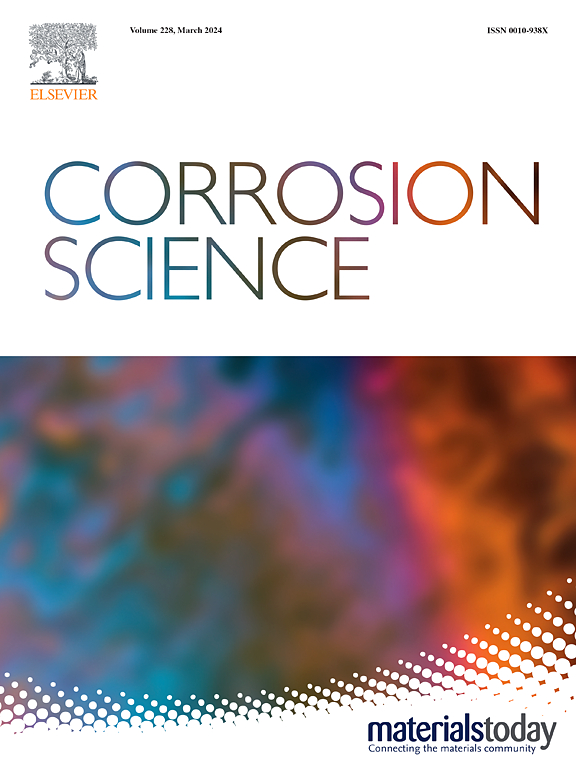弹性应力对 TA2 阳极溶解行为的影响
IF 7.4
1区 材料科学
Q1 MATERIALS SCIENCE, MULTIDISCIPLINARY
引用次数: 0
摘要
利用原位扫描电化学显微镜(SECM)、极化曲线、扫描电镜和原子力显微镜研究了 TA2 在酸性 3.5 % NaCl 溶液(含或不含 5 mM NaF)中弹性应力作用下的阳极溶解行为。结果表明,在 3.5 % NaCl 溶液中,被动膜在 100 MPa 压力下加速溶解,在 200 MPa 压力下更难溶解。在 5 mM NaF 的存在下,应力加剧了基质的溶解。具体来说,100 兆帕应力增加了不同晶粒之间的腐蚀差异,而 200 兆帕应力则使 TA2 的腐蚀更加均匀。本文章由计算机程序翻译,如有差异,请以英文原文为准。
Effect of elastic stress on anodic dissolution behavior of TA2
The anodic dissolution behaviors of TA2 under elastic stress in acidic 3.5 % NaCl solution with or without 5 mM NaF were investigated using in-situ scanning electrochemical microscopy (SECM), along with polarization curve, SEM and AFM. The results indicated that the dissolution of the passive film in 3.5 % NaCl solution was accelerated under 100 MPa, and more resistant to dissolve under 200 MPa. In presence of 5 mM NaF, the stress intensified the dissolution of the matrix. Specifically, 100 MPa stress increased the corrosion difference between different grains, while 200 MPa stress made the corrosion of TA2 more uniform.
求助全文
通过发布文献求助,成功后即可免费获取论文全文。
去求助
来源期刊

Corrosion Science
工程技术-材料科学:综合
CiteScore
13.60
自引率
18.10%
发文量
763
审稿时长
46 days
期刊介绍:
Corrosion occurrence and its practical control encompass a vast array of scientific knowledge. Corrosion Science endeavors to serve as the conduit for the exchange of ideas, developments, and research across all facets of this field, encompassing both metallic and non-metallic corrosion. The scope of this international journal is broad and inclusive. Published papers span from highly theoretical inquiries to essentially practical applications, covering diverse areas such as high-temperature oxidation, passivity, anodic oxidation, biochemical corrosion, stress corrosion cracking, and corrosion control mechanisms and methodologies.
This journal publishes original papers and critical reviews across the spectrum of pure and applied corrosion, material degradation, and surface science and engineering. It serves as a crucial link connecting metallurgists, materials scientists, and researchers investigating corrosion and degradation phenomena. Join us in advancing knowledge and understanding in the vital field of corrosion science.
 求助内容:
求助内容: 应助结果提醒方式:
应助结果提醒方式:


